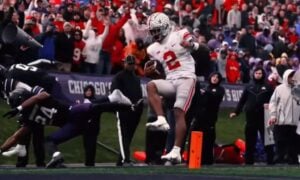You may have recently spotted Pittsburgh Steelers right guard David DeCastro on your TV set recently—which wouldn’t be much out of place from, say, August to February, if your team happens to be lucky enough to still be playing at that point.
But of course, DeCastro was in Brazil with his former college quarterback, Andrew Luck, taking in the scenes of the World Cup as the US fell valiantly to Belgium in overtime on Tuesday.
There is approximately a month of dead space in the annual football calendar between June and July residing between the end of minicamp and the beginning of training camp, during which players are essentially free. That is why you saw DeCastro and Luck enjoying themselves in Brazil, of course.
But that hardly means that there’s not much going on during this dead period on the schedule. In fact, most players tend to use this period to fine-tune their bodies on their own time, using their own workout regimens.
The Steelers are just one of all 32 teams of players gearing up for training camp as we speak. As ESPN’s Scott Brown explains, “many of [the players] have returned to where they trained during the offseason, and actually ratcheted up their workout regimens”.
And that is for good reason:
The players didn’t wear pads, or hit, during minicamp or other offseason practices. They’ll do both at training camp, and they’ll be expected to hit the ground running, literally. Camp opens on July 25th with a mandatory run test. After that, the grind of training camp really starts. The players know they better be ready for it, mentally, and especially physically.
With the added practice restrictions imposed on the coaching staff courtesy of the most recent alterations to the Collective Bargaining Agreement, it’s becoming ever more important for players to take personal responsibility in their own fitness, health, and knowledge of their football assignments in their own time, which is why this is a topic of discussion in the first place.
But caution must be urged, as this can be taken too far.
We saw this last season with Steelers nose tackle Steve McLendon. He used this dead time last season to try to improve his cardiovascular fitness and lose some weight, during which he claimed to run up to three times a day.
As a result, he lost about 20 pounds, which, for a nose tackle, usually isn’t a good thing, and that proved to be the case for him. He talked about that overtraining earlier this offseason and how that affected his ability to perform his duties during the season.
It’s important for players to remember that, while keeping up on your fitness is essential for a professional athlete, so too is maximizing your recovery periods. The NFL season can be quite a grind, and this period between June and July is the last stretch of such time until 2015. Moderation is key until training camp.







